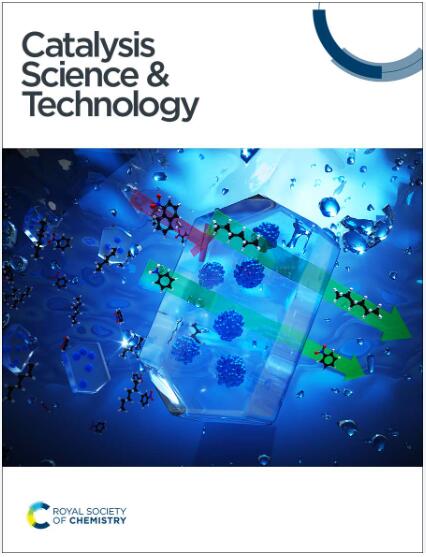An examination of dimethyl oxalate hydrogenation to methyl glycolate on silica-supported Ni–Co alloy catalysts†
IF 4.4
3区 化学
Q2 CHEMISTRY, PHYSICAL
引用次数: 0
Abstract
The selective hydrogenation of dimethyl oxalate (DMO) to methyl glycolate (MG) is becoming increasingly attractive for the industrial production of polyglycolic acid (PGA) biodegradable plastics. However, it is still necessary to develop highly selective/active and affordable DMO hydrogenation catalysts for the large-scale production of MG and PGA. In this report, silica-supported Ni–Co alloy catalysts were meticulously investigated for the selective hydrogenation of dimethyl oxalate to methyl glycolate. Compared with monometallic Ni or Co, the supported Ni–Co alloy catalysts with an appropriate doping of Co in Ni resulted in the significant promotion of dimethyl oxalate conversion and methyl glycolate selectivity at mild temperature (180 °C). Optimized dimethyl oxalate conversion and selectivity for methyl glycolate were 87% and 86%, respectively, on the 15Ni–10Co/SiO2 catalyst. The promotion of dimethyl oxalate conversion was attributed to the large capacity and strong strength of hydrogen adsorption, as proven via H2-TPD, and the active sites with uniform strength for CO adsorption and dimethyl oxalate (or key oxygenated intermediates) adsorption, as proven via in situ CO-DRIFTS. These phenomena were enhanced by the effective interaction between Ni and Co. Furthermore, it was found that the strength of acid sites has an influence on product selectivity control for ethanol and methyl formate; particularly, the synergy between the acid sites and metal sites may facilitate deep hydrogenation of dimethyl oxalate to form unexpected methyl formate. This study not only shows the catalytic behavior of dimethyl oxalate hydrogenation on non-precious Ni–Co alloy catalysts but also provides new insights into designing Ni-based catalysts for the selective hydrogenation of oxygenates with multiple ester groups.

求助全文
约1分钟内获得全文
求助全文
来源期刊

Catalysis Science & Technology
CHEMISTRY, PHYSICAL-
CiteScore
8.70
自引率
6.00%
发文量
587
审稿时长
1.5 months
期刊介绍:
A multidisciplinary journal focusing on cutting edge research across all fundamental science and technological aspects of catalysis.
Editor-in-chief: Bert Weckhuysen
Impact factor: 5.0
Time to first decision (peer reviewed only): 31 days
 求助内容:
求助内容: 应助结果提醒方式:
应助结果提醒方式:


